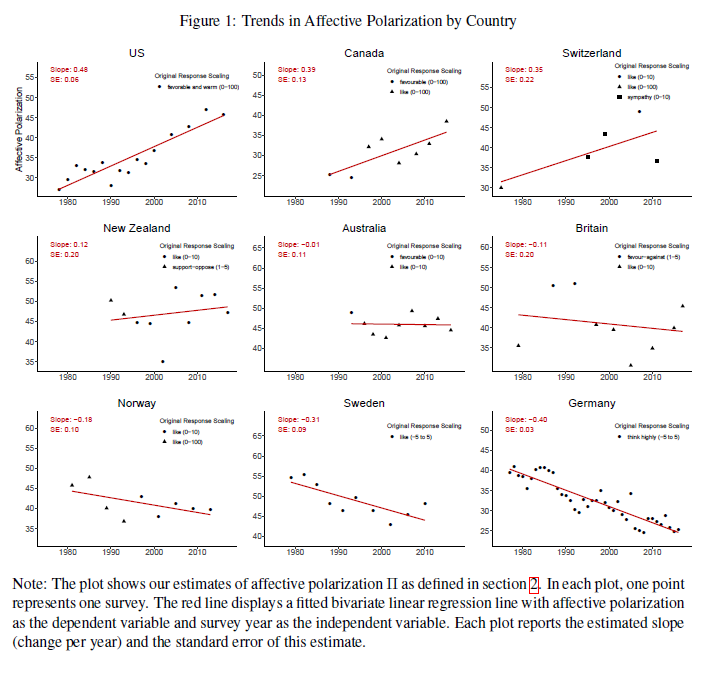It's difficult to answer this objectively over long periods of time owing to lack of comparative instruments. If we restrict discussion to the US Congress voting record, it's probably the longest-track instrument that can be used. To get just one graph (on US House of Representatives) which goes back to the 45th Congress (1879) from a related question

Measurements at larger population level are stymied by lack of polls that consistently asked the same question, so only a narrower time frame can be compared, e.g.

Using data from the American National Election Study (ANES), the figure shows trends in average feeling
for the party participants identify with (in-party) and for the opposing party (out-party). In-party feeling
(green line) has remained high over the period plotted, though it has decreased slightly in recent years.
Out-party feeling (purple line) has decreased dramatically, especially after 1990.We also plot affective
polarization (gray line)—the difference between mean in-party feeling and mean out-party feeling—which
shows a significant increase over time (Iyengar et al. 2012), mainly due to an increase in animus against the
out-party. However, it is worth noting that affective polarization actually decreased between 2012 and 2016
due to decreases in feeling toward the in-party.
As you can see polarization has been increasing in the US in the past 3 decades by most measures, but at least based on Congress data, it was just as high in the 1930.
Measuring polarization for more than two parties (which relevant for many other non-US countries) is somewhat more difficult, methodologically, as there are multiple valid measures of polarization even for the same data. Again owing to data about parties being more easy to get than for the public in other countries too, the X axis in the following graph is relevant. As you can see polarization went up in some countries more than in others.

Again, whole population measures aren't usually available except for shorter time frames:

The US trend since the 1980 isn't reflected in (many) European countries up to 2010 or so. But note that this data (owing to time frame in that study) does not cover the more recent rise in the populist right in Europe.
And of course, if by "world politics" you mean relations between countries, that's more difficult to quantify, but surely the Cold War and World Wars before that were periods of higher polarization in that sense. (Someone even predicted the "end of history" as the Cold War was ending...)



